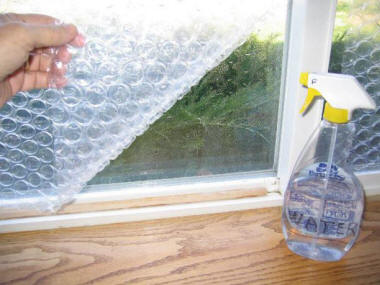A New Year’s Recipe for Fixing the Food System

Andrew Casner, an urban farming activist, walks through the South Bronx with a delivery of freshly harvested vegetables grown in the neighborhood
Posted by: Danielle Nierenberg and Ellen Gustafson on December 31, 2012 (Originally posted at businessweek.com)
As we start the New Year, many people will be thinking about plans and promises to improve their diets and health. We think a broader collection of farmers, policymakers, and consumers need new, bigger resolutions for fixing the food system—real changes with long-term repercussions in fields, boardrooms, and on plates all over the world. Below are 13 resolutions (for the New Year, of course) that the world can’t afford to break when nearly 1 billion people are still hungry and more than 1 billion are suffering from the effects of being overweight and obese.
We have the tools available to change for the better the way we grow, distribute, prepare, and consume the food we eat. Let’s use them in 2013.
Urban farming
Food production doesn’t happen only in fields or factories. Nearly 1 billion people worldwide produce food in cities. In Kibera, the largest slum in Africa, farmers are growing seeds of indigenous vegetables and selling them to rural farmers. At Bell Book & Candle restaurant in New York, customers are served rosemary, cherry tomatoes, romaine, and other produce grown from the restaurant’s aeroponic rooftop garden.
Better access
People’s Grocery in Oakland and Fresh Moves in Chicago bring mobile grocery stores to food deserts, giving low-income consumers opportunities to make healthy food choices. Instead of chips and soda, they provide affordable organic produce, not typically available in those communities.
Eat what you recognize
Food writer Michael Pollan advises not to eat anything that your grandparents wouldn’t recognize. Try eating more fruits, vegetables, and whole foods without preservatives and other additives.
More home cooking
Home economics classes have declined in schools, and young people lack basic cooking skills. Top Chefs Jamie Oliver, Alice Waters and Bill Telepan are working with schools around the country to teach kids how to cook healthy, nutritious foods.
Share a meal
Nearly half of all adults in the U.S. eat meals alone, according to the Hartman Group. Sharing a meal with family and friends can foster community and conversation. Recent studies suggest that children who eat meals with their families are typically happier and more stable than those who do not.
Eat your vegetables
Nearly 2 billion people suffer from micronutrient deficiencies worldwide, leading to poor development. The World Vegetable Center is helping farmers grow high-value, nutrient-rich vegetables, including amaranth, spider plant, and eggplant, in Africa and Asia, improving health and increasing incomes.
Stop the waste
Roughly one-third of all food is wasted—in fields, during transport, in storage, and in homes. There are easy and inexpensive ways to prevent waste. Initiatives such asLove Food, Hate Waste offer consumers tips about portion control and recipes for leftovers, while farmers in Bolivia are using solar-powered driers to preserve foods. A simple storage bag, developed by Purdue University, keeps pests from contaminating cow peas (also called black-eyed peas) an important staple for millions of people in Western Africa.
Engage young people
Making farming both intellectually and economically stimulating will help make the food system an attractive career option for youth. Across sub-Saharan Africa, cell phones and the Internet are connecting farmers to information about weather and markets; in the U.S., Food Corps is teaching students how to grow and cook food, preparing them for a lifetime of healthy eating.
Protect workers
Farm and food workers around the world are fighting for better pay and working conditions. In Zimbabwe, the General Agricultural & Plantation Workers Union of Zimbabwe (GAPWUZ) protects laborers from abuse. In the U.S., the Coalition of Immokalee Workers successfully persuaded Trader Joe’s and Chipotle to sign the Fair Food Program, agreeing to buy their produce only from growers who pay fair wages.
Farmers are important
Farmers aren’t just farmers; they’re businesswomen and businessmen, stewards of the land, and educators, sharing knowledge in their communities. Slow Food International works with farmers all over the world, helping to recognize their importance in preserving biodiversity and culture.
The role of government
Nations must implement policies that give everyone access to safe, affordable, healthy food. In Ghana and Brazil, government action, including national school feeding programs and increased support for sustainable agricultural production, greatly reduced the number of hungry people.
Change the metrics
Governments, NGOs, and funding organizations have focused on increasing production and improving yields, rather than improving nutrition and protecting the environment. Changing the metrics, and focusing more on quality, will improve public environmental health and livelihoods.
Fix the broken food system
Agriculture can be an important part of the solution to some of the world’s most pressing challenges, including unemployment, obesity, and climate change. These innovations simply need more research, more investment, and ultimately more funding. In December, the President’s Council of Advisors on Science and Technology, issued a report calling for the U.S. to increase its investment in agricultural research by $700 million per year to help create a new “innovation ecosystem” in agriculture.
We can do it—together.
Danielle Nierenberg and Ellen Gustafson are cofounders of Food Tank: The Food Think Tank.






















 t’s becoming clear that we can grow all the food we need, and profitably, with far fewer chemicals. And I’m not talking about imposing some utopian vision of small organic farms on the world. Conventional agriculture can shed much of its chemical use – if it wants to.
t’s becoming clear that we can grow all the food we need, and profitably, with far fewer chemicals. And I’m not talking about imposing some utopian vision of small organic farms on the world. Conventional agriculture can shed much of its chemical use – if it wants to.